How to walk in snowshoes?
Good question. If one thing is clear since we went snowshoeing earlier this year it’s that a lot of people don’t know much about snowshoeing – and before, neither did we.
We first became interested in it as a way to keep walking in winter, and as a sustainable and slow travel activity. Something about standing still and silent in that sleeping winter landscape was really alluring to us. So we went and tried it up in the Italian Dolomites with Collett’s Mountain Holidays. [gifted]
From that experience we quickly realised that snowshoeing is, frankly, the best. Just the best of all things. It’s simple, easy and fun, eco-friendly, human health-friendly & awe-inspiring.
So patently we think you should give it a go – whatever your starting point is.
Here’s everything you need to know about snowshoeing from a beginner’s perspective:
What snowshoes are & what snowshoeing is
First things first. Snowshoes are simply large flat planks (made mostly of metal or plastic) you attach to hiking boots to get around on deep snow. Their spikes grip the snow and their size spread your weight, so you don’t slip or sink.
People who live in the colder realms of planet earth would just call this ‘walking’. We imagine they find it amusing other people come and do this as a specific activity.
But that they do: it’s hiking the snowy trails otherwise too deep to walk in winter.
By the way: snowshoes are not to be confused with cross-country skiing/Nordic walking – they use the long skis that you scoot along on. Sometimes they use the same trails though.
How to put snowshoes on and how to walk in snowshoes
Aha! “How to walk in snowshoes” is the name of this post because this is what we found a lot of people were googling! The snowshoes we used from Collett’s were identical (not special women’s or men’s ones) that we could just adjust them to fit our feet. They had straps over the toe, at the heel and around the ankle.
They reminded us actually of the measuring board shoe shops use to measure children’s feet. You remember?
With the measuring boards on, you can just walk – it’s as simple as that.
There are things you can fiddle with: the heel can be left unclipped, which is easiest for flat walking as you can move your foot relatively freely. If going downhill, it’s better to clip that back in so the snowshoe doesn’t flap about. And if you’re going steeply uphill you can place your heel over the clip to give your foot a tiny lift. But it’s all really personal preference, so you don’t really need to remember all of that.
How easy or difficult snowshoeing is if you don’t ski
This is something we wondered too. As two complete non-skiers, we can confirm it’s very easy and you don’t need experience in any other winter sports. It really is just walking – if slightly heavier.
It is potentially tricky walking down snow-covered steps, or narrow areas. The snowshoes are too wide to get down easily really – but downhill generally is much simpler, as you just moonwalk, cushioned by the snow. Plus they give you extra grip with the spikes!
Where to go snowshoeing
We’ve written a whole blog post about the best places to go snowshoeing in Europe here – there are some spectacular options!
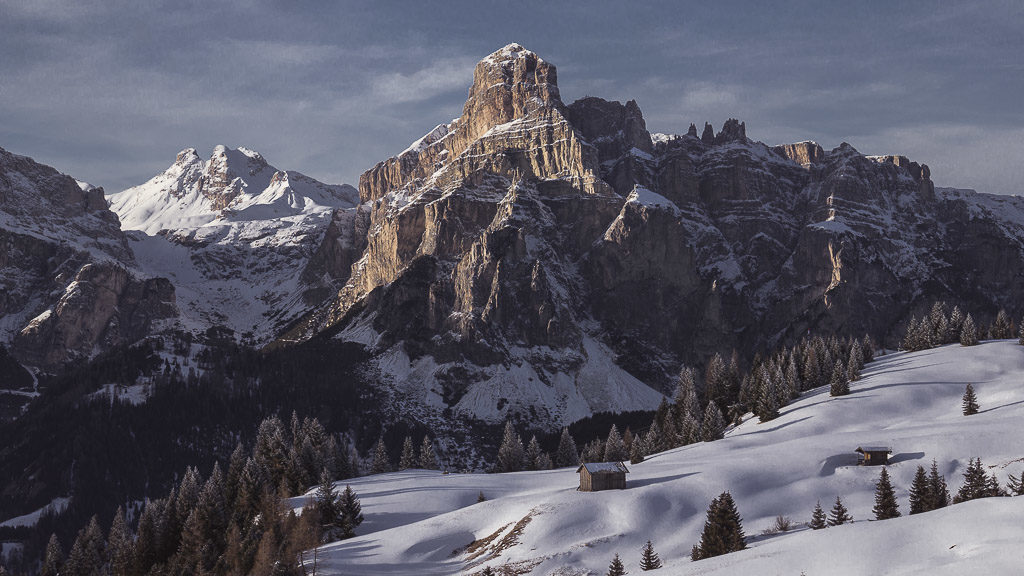
What to bring
Snowshoes and poles are the main things – we hired them from Collett’s, but they can be hired from most ski shops in ski areas too.
It’s of course important to dress warmly. We would say bring good waterproof trousers (just like if you’re skiing) and maybe some gaiters too – you don’t want deep snow getting in your boots which is v unpleasant.
We both wore 3-4 layers, the base layer being a thin thermal top. We had winter coats, gloves and hats, and basically got boiling hot hiking up hills – but better that than too cold?
You’ll also need a backpack to carry snacks and water (keep liquids in your backpack so it doesn’t freeze!) and to fasten your snowshoes onto when you don’t need them.
We used our favourite Millican bags Fraser The Rucksack and Smith The Roll Pack which are as hardy and beautiful as they come [gifted].
Where to stay & guided tours
We went snowshoeing in the Italian Dolomites with Collett’s, a mountain holiday specialist [gifted]. We stayed in their chalet in Badia where we had breakfasts and dinners provided. On their holiday Collett’s do two guided tours a day and we went on a couple, but mostly went off on our own. The staff there gave us all the maps, route direction and help we could need.
You can read more on snowshoeing here:
Snowshoeing in the Dolomites with Collett’s Mountain Holidays
Where to go snowshoeing in Europe: our top 5 best destinations
What snowshoeing trails are like
The trails we used in the Dolomites were summer trails that were still totally accessible in the winter with snowshoes. There are so many (read our top 3 that we did here) and they were well signposted. A local map of the area will have them outlined.
What each trail is like differs. Some connect rifugios together, giving you plenty of places to stop for food and drink. They’ll probably mean you have to walk across pistes – fairly easy as long as you keep an eye out (up!), but not as remote as some people would like.
Other trails take you straight out into the wilderness. We did a couple of snowshoeing walks where we saw not a single other person. The chances of seeing mountain wildlife like deer, ibex and hares are pretty high snowshoeing in places like this which is incredible.
Trail etiquette & safety
Basic stuff: it’s a good idea not to go out snowshoeing alone. It’s also sensible to let someone know where you’re going. Check the weather forecast, take your phone, water and food with you, and remember that it’s winter – days are short so give yourself time to get down, or to get the last ski lift (they can close as early as 4pm we found).
Something non-skiers may not know: not all ski lifts take people down as well as up (even though they, of course, all do go down. Ski lifts, why?)
Why you should go snowshoeing
It’s an activity that allows you to get out into the mountains, away from the crowds, closer to nature. Sustainably speaking, it’s a lot less destructive than skiing (no clearing for ski slopes, no going up and down on ski lifts repeatedly, little noise and resort development pollution etc).
And it’s good for you. You’ll spend all day outdoors in the snowy quiet with mountains for companions – and come back rosy cheeked, tired, and revitalised.
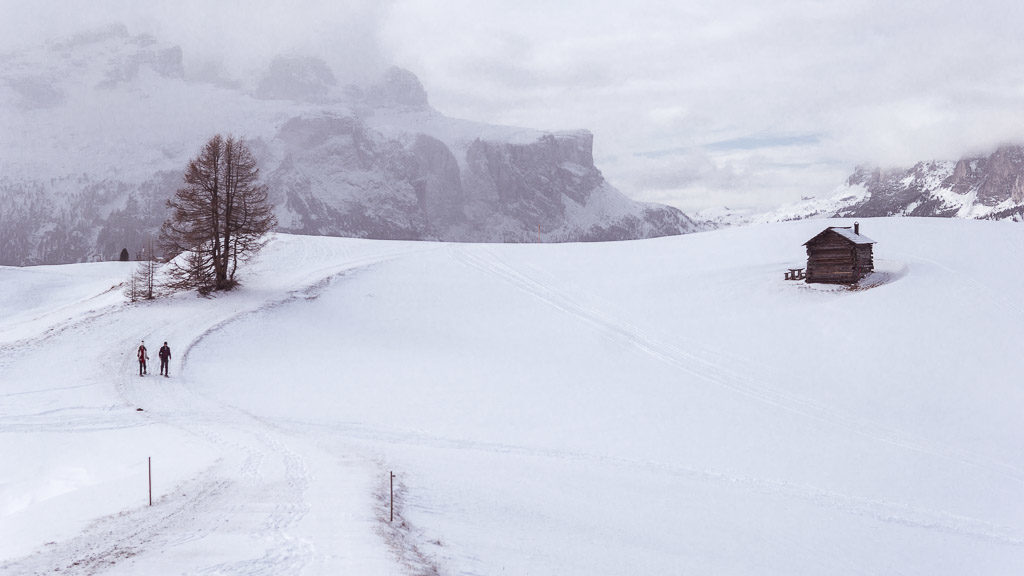
Note: We were guests of Collett’s Mountain Holidays, who kindly gifted us this trip for free and showed us how to walk in snowshoes. We approached them about this as we believe strongly that honestly snowshoeing is awesome.
You can find out more information about Collett’s snowshoeing holidays here.
Do you have any more questions beyond ‘how to walk in snowshoes’? Leave them below and we’ll answer them
You can keep up with our slow adventures and see more of us over on Instagram, Facebook and Twitter.
Plus if you’ve liked this post, why not Pin it? And come explore our Pinterest page too for more slow travel inspo.
Pin it:
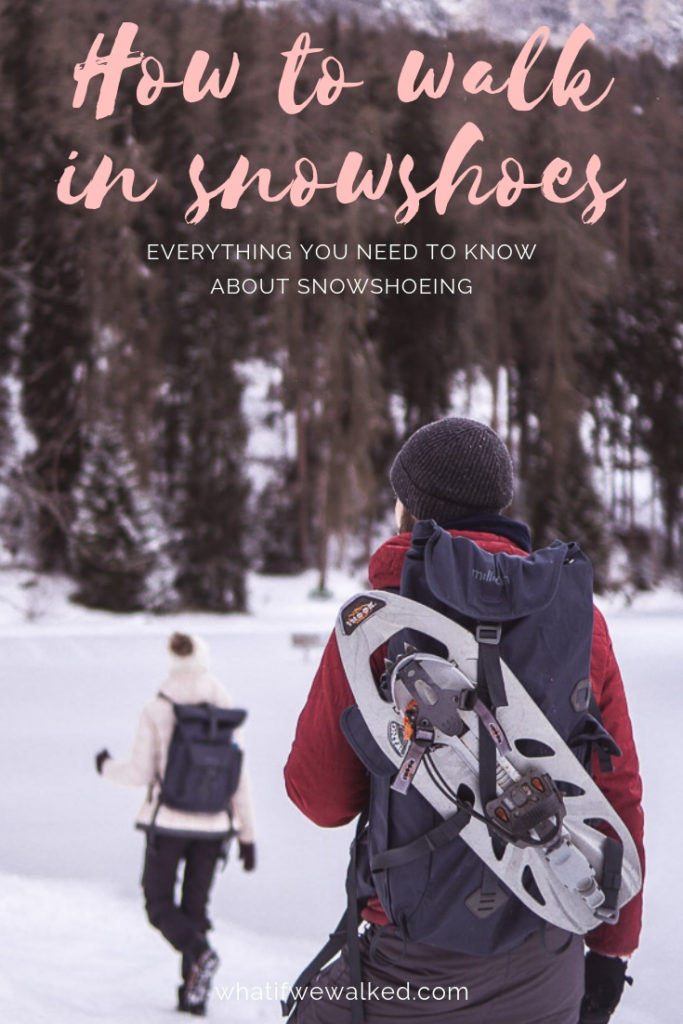

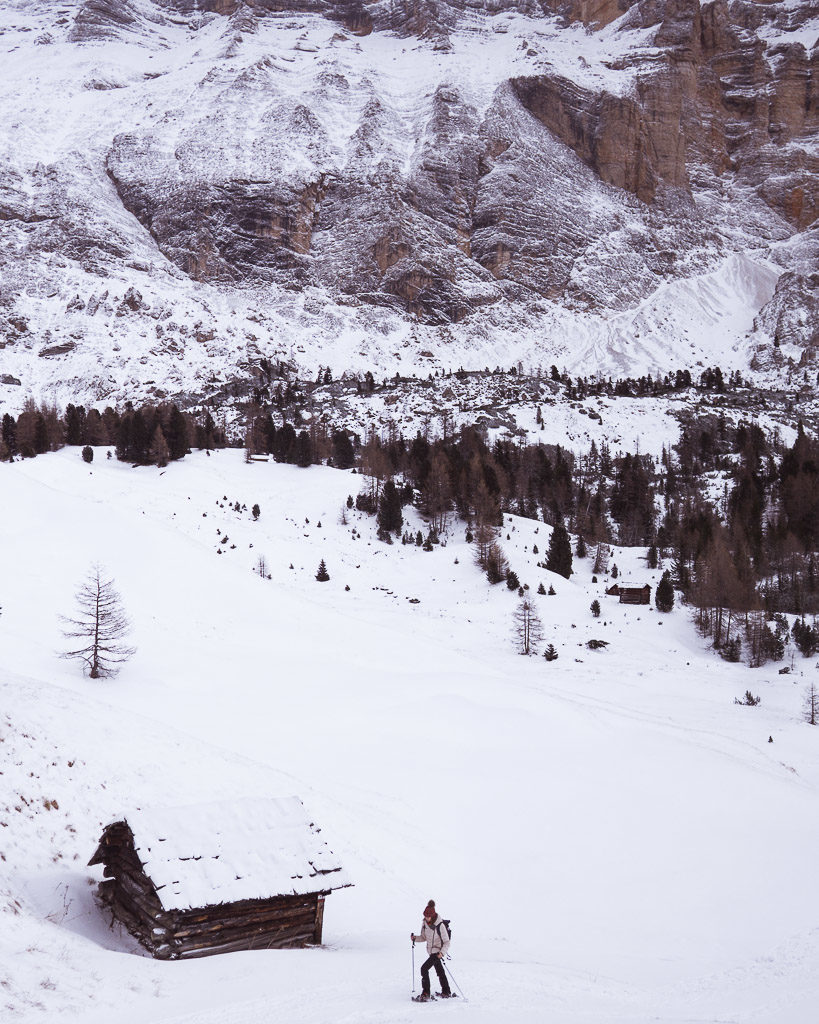
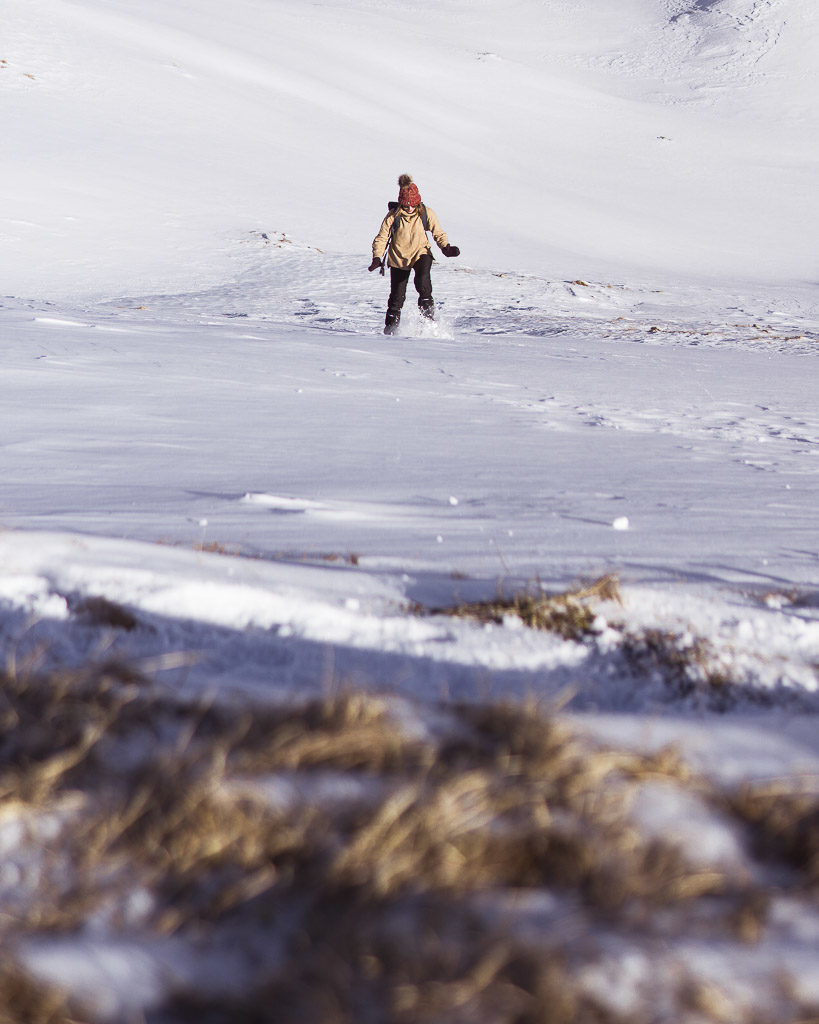
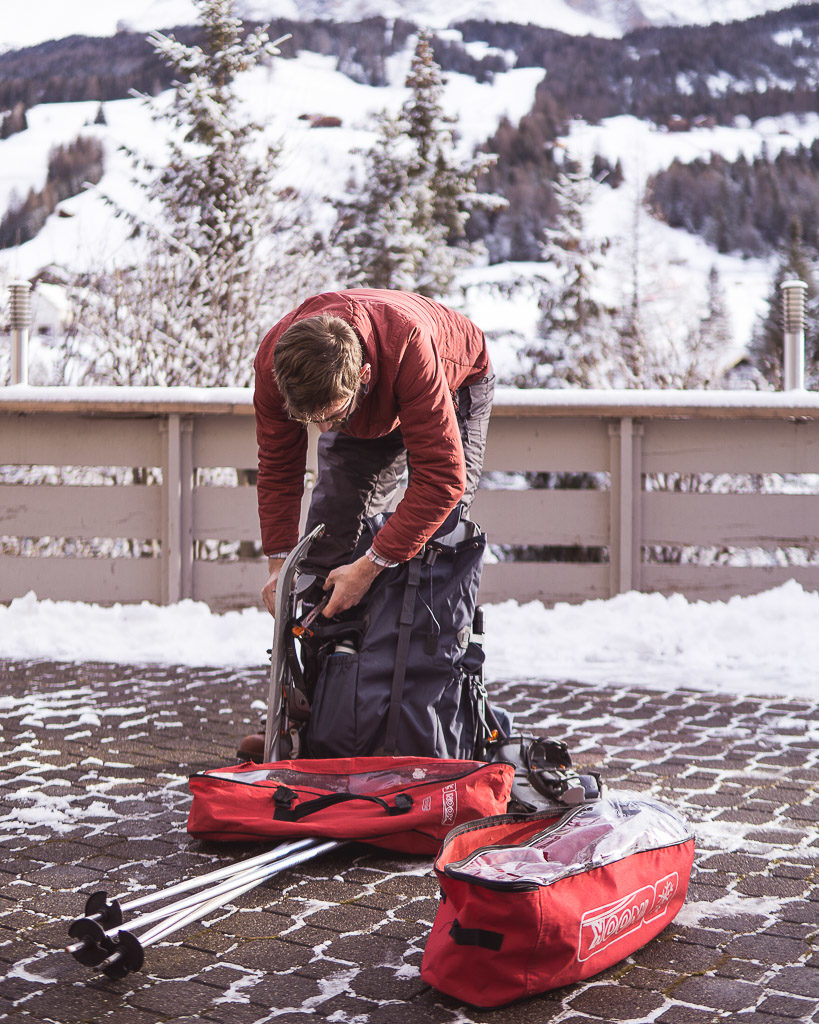
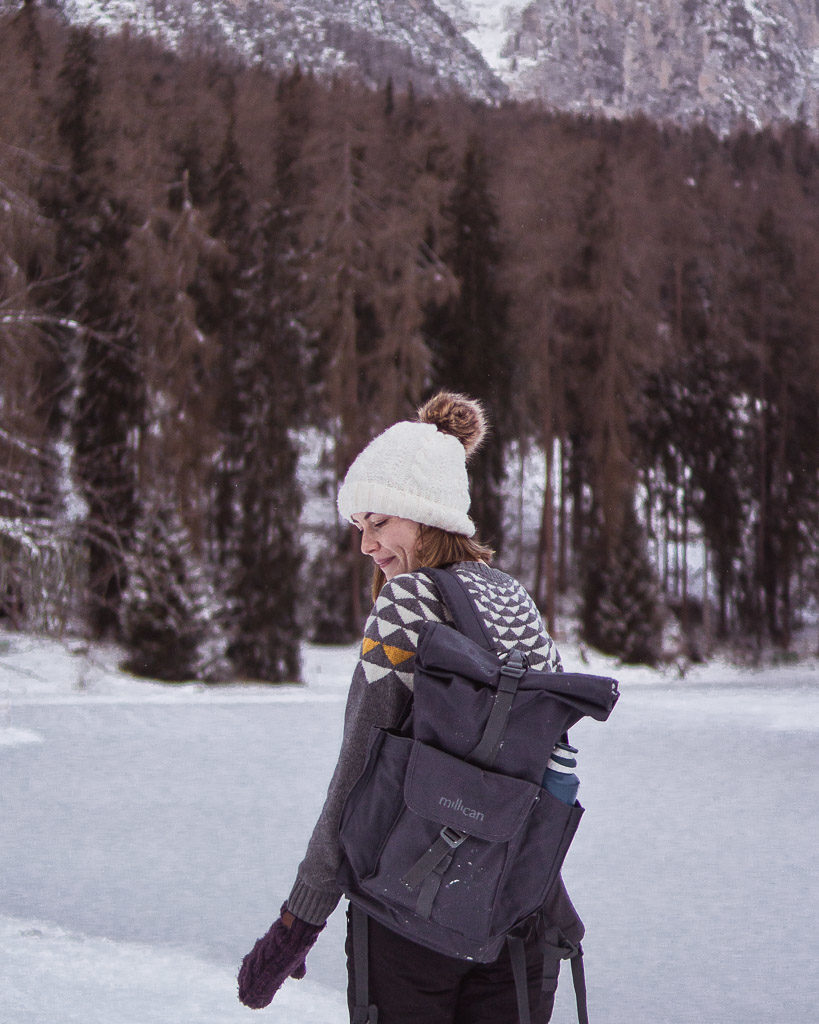
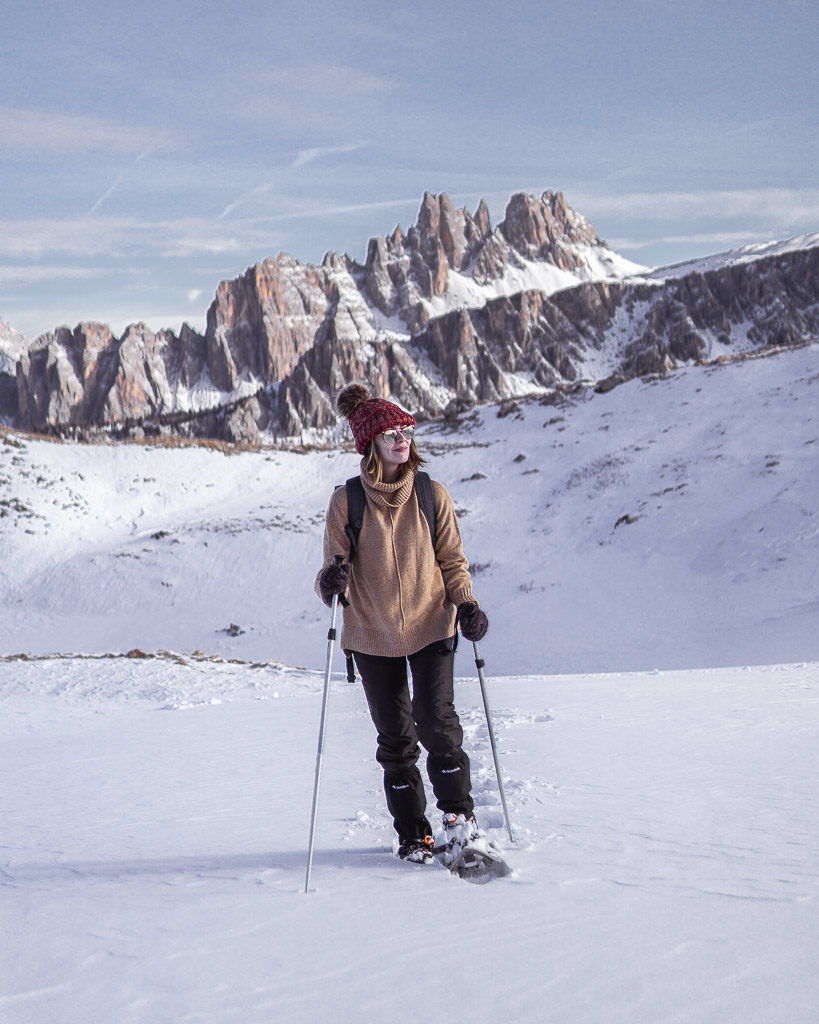
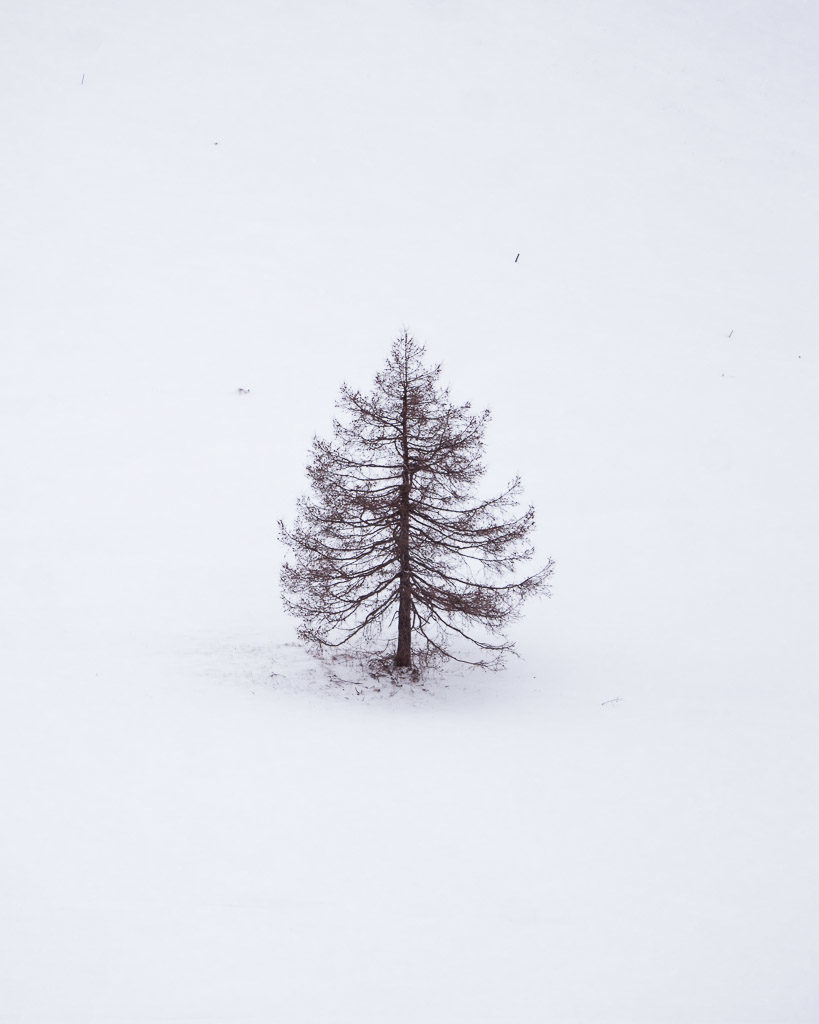
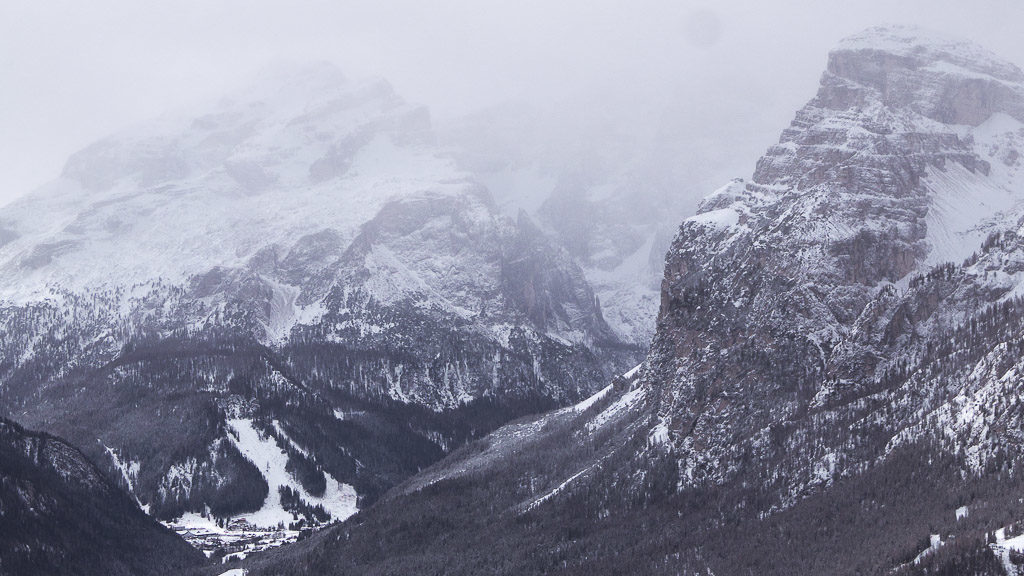
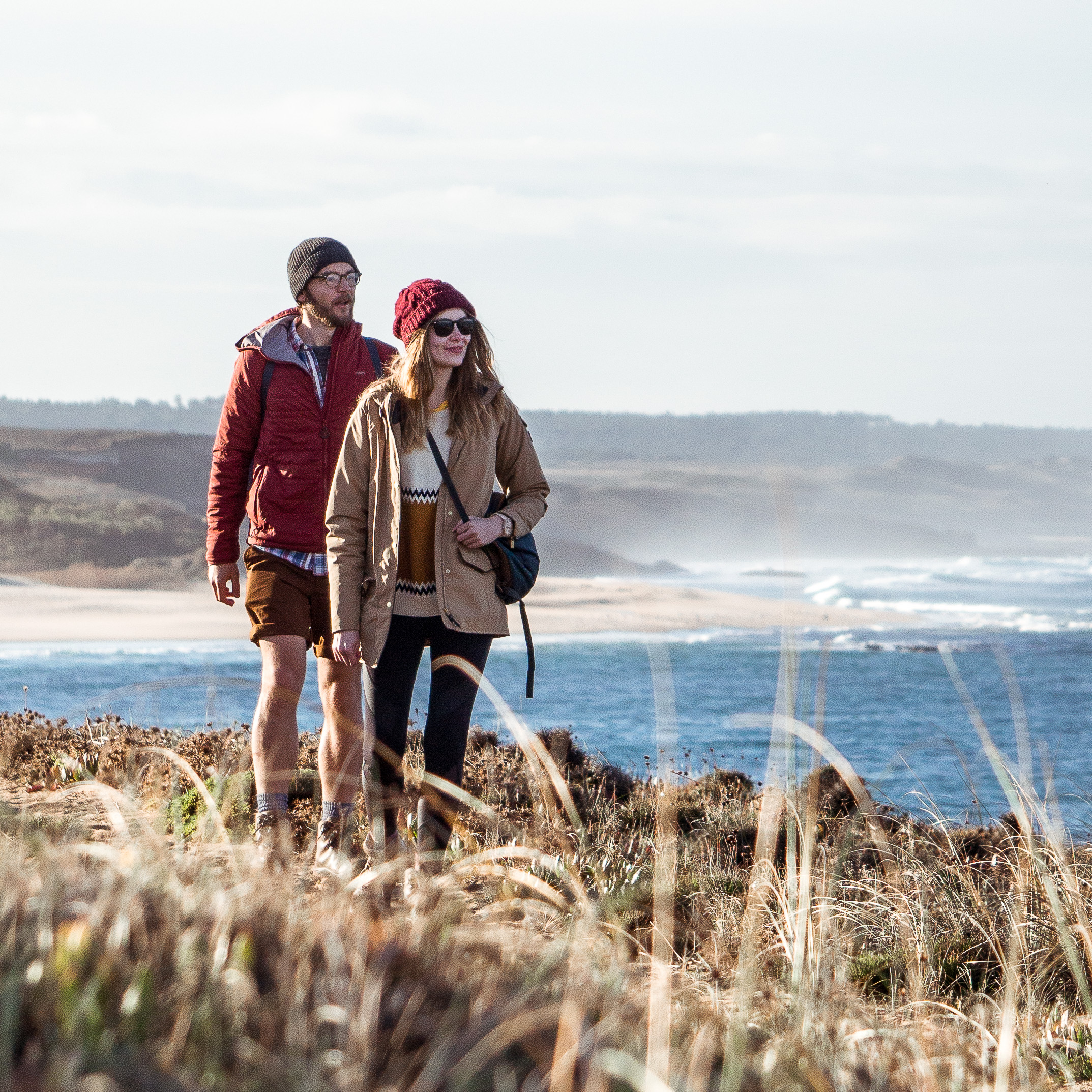
Thank you for this introduction to snowshoe walking. What sort of boots are required-waterproof moon boots or proper walking boots or ski boots?
We just used our normal walking boots to fix into the snowshoes. It was so much easier than I expected it to be! Hope you’re planning a snowshoeing trip!
Best wishes,
Luke